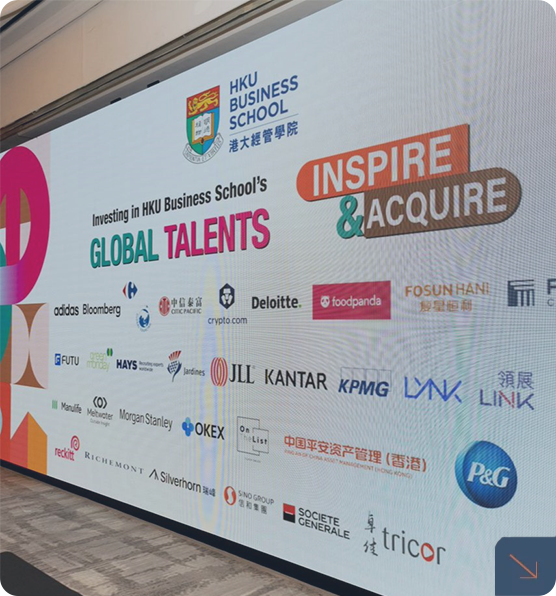AI image generation is rapidly evolving, driving innovation in marketing, advertising design, and art creation. HKU Business School’s Professor of Innovation and Information Management, Prof. Zhenhui Jack Jiang, along with his research team, recently assessed 22 AI models. They reviewed the performance and potential risks of AI models in image generation.

3917 8351
KK 804
Online video platforms face the challenge of balancing the needs of their users with those of their advertisers. Although users typically prefer to have less intrusive ads, advertisers aim to effectively catch user attention. This paper investigates how the provision of ad choice affects the effectiveness of video advertising. We argue that allowing users to choose an ad to view may trigger a “conjecture-formation-and-confirmation” process that motivates users to pay more attention to the selected ad. Two online experiments and four laboratory experiments are conducted to test the theorized underlying mechanism of the ad choice effect. Study 1 finds when users are unfamiliar (versus familiar) with the content of ad options (i.e., they need to make conjectures about ad content), ad choice is more likely to increase user attention to the chosen ad. Study 2 and Study 3 show that the impact of ad choice on user attention is more likely to be positive when users are enabled to make conjectures about ad content, such as when choice options provide more relevant information about ad content. Study 4a and Study 4b provide more direct support for the underlying mechanism by showing that the ad choice effect is attenuated when users cannot form conjectures about ad content at the choice stage. Study 5 further demonstrates that the positive effect of ad choice is robust across different ad settings. Taken together, these studies show ad choice is more likely to boost the effectiveness of video advertising when the “conjecture-formation-and-confirmation” process is triggered.
Since ChatGPT was introduced, large language models (LLMs) have quickly become a focus in the global tech competition. LLMs are being applied in various fields, presenting ample opportunities for AI development. The U.S. currently leads in technology development and innovation, with its models excelling at the technological forefront. In contrast, Chinese models focus on optimizing for local languages and practical applications. Striking a balance of competition and cooperation between the two countries will be crucial in the coming years.
Since ChatGPT was introduced, large language models (LLMs) have quickly become a focus in the global tech competition. LLMs are being applied in various fields, presenting ample opportunities for AI development. The U.S. currently leads in technology development and innovation, with its models excelling at the technological forefront. In contrast, Chinese models focus on optimizing for local languages and practical applications. Striking a balance of competition and cooperation between the two countries will be crucial in the coming years.
截至7月底,国内共推出超300个大模型。经过大模型数量之争的上半场,下半场中国大模型该如何押宝?“持续稳定的政策支持、庞大的算力规模和广阔的应用场景是中国独特的竞争优势和巨大的发展潜力。”蒋镇辉教授认为,大模型将从数量到更重视应用端发展。
生成式人工智能(AI)工具發展日新月異,香港大學經濟及工商管理學院今日(12日)發表一項人工智能大語言模型評測綜合排行榜,通過港大深圳研究院建立評分系統,比較十多款大模型表現,顯示由中國科企百度開發的「文心一言」,在中文語境下綜合得分最高,但在「通用語言能力」卻跑輸「ChatGPT4-Turbo」,而大部分國產模型在英文語境下表現均處於「稍微劣勢」。
Many mobile applications use push notifications and reminders to explicitly educate, remind, and motivate users to perform healthy behaviors. However, users do not always act according to these explicit digital interventions. Our study investigates whether users’ self-regulation can be implicitly facilitated with a proper mobile interaction design. Specifically, we investigate the impacts of two touch modes that are supported by force-based interaction technology, that is, pressing and tapping. Drawing on the theory of embodied cognition, which suggests that people automatically infer meanings from their bodily actions, we conjecture that pressing, compared with tapping, enhances self-regulation because the action of pressing on the touchscreen embodies resolute approach motivation toward goals. We test our hypotheses in three experiments. The first experiment investigates beverage choices on a mobile app; the second experiment examines goal setting on a fitness app; and the third experiment focuses on personal hygiene learning on a mobile education app. The results from the three experiments show that pressing actions can improve users’ self-regulation in selecting a healthier but less tasty beverage (Study 1), setting higher exercise goals and performing more physical exercise (Study 2), and reducing lapses in maintaining personal hygiene (Study 3). In addition, such effects were more salient among users with a higher level of health knowledge and a promotion-focused health orientation. This study contributes to healthcare IT research by showing that mobile interaction can be leveraged to nudge users toward enhanced self-regulation.
Online retailers employ various kinds of social and marketing information cues to influence consumers’ product interest and purchases. This study focuses on the effects of two types of information cues, product popularity and time restriction on product promotions, on consumers’ product approach behavior. It takes a unique perspective by examining how such effects change as consumers’ shopping goals become more concrete. The results of a field experiment and a laboratory experiment show that product popularity and time restriction may not always have a positive influence on consumers’ product approach behavior. In particular, when consumers have not yet formed specific shopping goals, product popularity and time restriction weaken each other's effects on users’ initial product judgment, whereas these two information cues reinforce each other's effects on consumers’ final product evaluation when consumers’ shopping goals have become more specific. This study deepens our understanding of the individual and interaction effects of product popularity and time restriction at different levels of consumer goal specificity. The findings have significant implications for how retailers can leverage different information cues for promoting products.
Ding! These days, it seems that we live in a sea of nonstop, never-ending mobile notifications: every waking moment, we receive buzzes and pings that remind that we have to do things or be somewhere or respond to someone about something. Ding!





